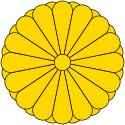Background
The elections for the lower house of the Diet were held in accordance with provisions of the new Meiji Constitution, which had been promulgated in 1889. [2]
The elections had limited suffrage, with only male citizens 25 years of age and over, who had paid 15 Japanese Yen or more in national taxes, and who had been resident in their prefecture for at least a year, qualified to vote. The number of eligible voters who met this requirement was 450,872 people out of a total Japanese population of 39,933,478 (1.13%). The high tax requirement meant that voter roles were heavily weighed towards rural landlords and urban entrepreneurs. In terms of social class, 91% were commoners, and 9% were ex-samurai. [3] Residents of the prefectures in Honshū, Kyūshū and Shikoku participated; residents in Hokkaidō and Okinawa (as “territories”) were excluded from this election. About 95% of those eligible to vote actually cast ballots, although there was no penalty for not doing so. [4]
Only male citizens 30 years of age and over, who were not members of the kazoku peerage or of the imperial family or its branches were allowed to become candidates for office in the lower house. The number of seats in the lower house was 300, divided into 214 single-seat districts and 43 two-seat districts, which were contested by 1,243 candidates. The election went smoothly and without violence reported. [5]
This page is based on this
Wikipedia article Text is available under the
CC BY-SA 4.0 license; additional terms may apply.
Images, videos and audio are available under their respective licenses.




